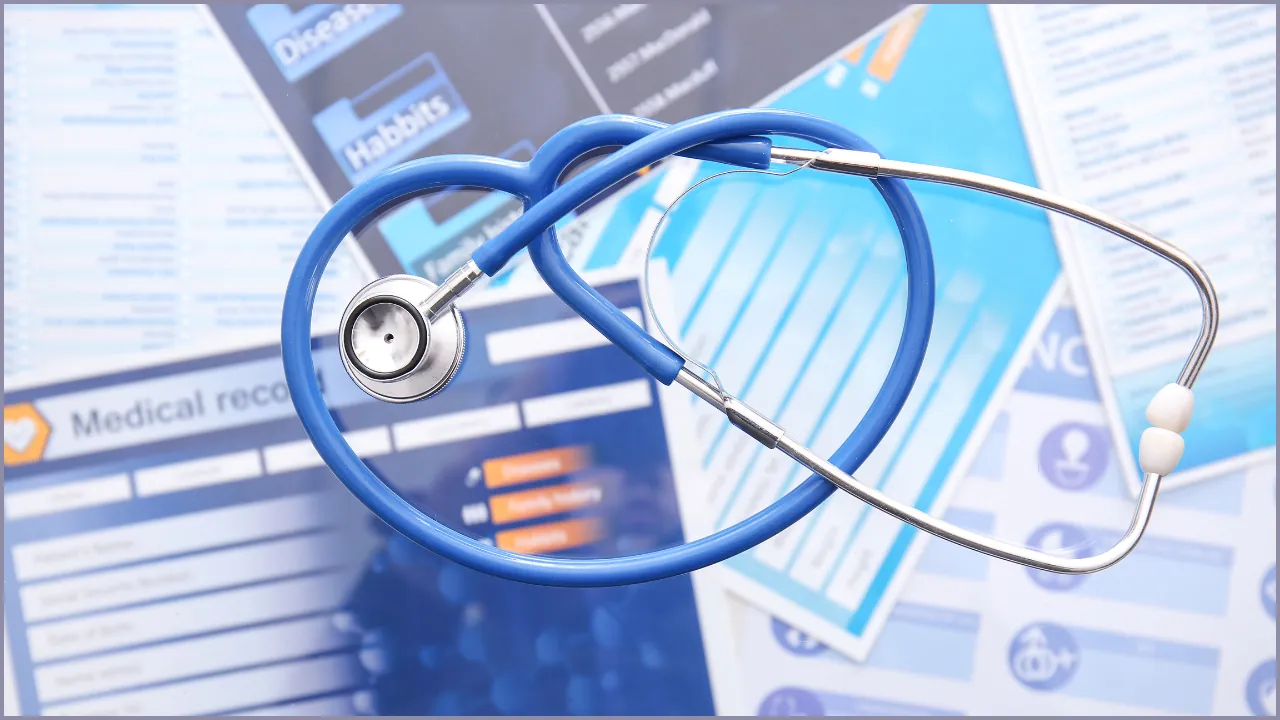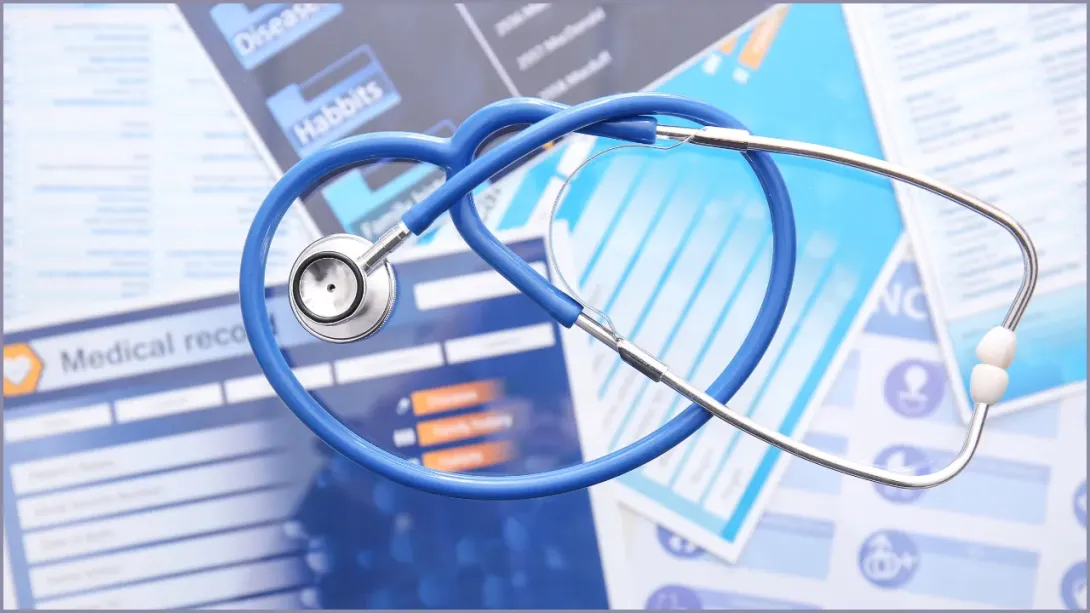What Is an Electronic Health Record? A Complete Breakdown for Healthcare Professionals


Electronic Health Records (EHRs) have become the foundation of modern healthcare, enabling efficient patient data management, enhanced clinical decision-making, and improved patient outcomes. Yet, despite their potential, many healthcare providers struggle with usability issues, interoperability challenges, and administrative burdens.
By integrating DrKumo’s AI-powered Remote Patient Monitoring (RPM) solution with existing EHR systems, healthcare providers can turn traditional EHRs into dynamic, real-time patient health management tools. This integration can help healthcare providers reduce hospitalizations, support improved patient adherence, and optimize chronic disease management, potentially leading to better outcomes and cost savings.
What Is an Electronic Health Record (EHR)?
An EHR is a comprehensive digital record of a patient’s medical history, maintained over time by healthcare providers. Unlike Electronic Medical Records (EMRs), which are typically used within a single practice, EHRs are designed for interoperability, allowing multiple healthcare providers across different facilities to access and update patient records in real time.
EHRs typically include:
- Patient demographics
- Medical history, diagnoses, and conditions
- Medications and allergies
- Lab test results and imaging scans
- Vital signs and immunization records
- Treatment plans and progress notes
- Billing and insurance information
The Business Case for EHR Adoption in Healthcare
1. Faster, More Accurate Diagnoses and Treatment
EHRs enhance healthcare by providing clinicians with immediate access to comprehensive patient data, thereby improving diagnostic accuracy and expediting treatment decisions. A study by Market.us Media have shown that EHRs can reduce diagnostic errors by up to 40% compared to traditional paper-based systems. Additionally, the integration of Artificial Intelligence (AI) with EHRs has demonstrated a 95% accuracy rate in predicting disease progression, further aiding in timely and precise medical interventions.
Moreover, EHRs facilitate better communication among healthcare providers, leading to improved care coordination and patient outcomes. However, the effectiveness of EHRs largely depends on proper implementation, user training, and ongoing support to overcome challenges such as system integration issues and data security concerns.
2. Improved Patient Safety and Reduced Medical Errors
The use of AI-driven alerts in EHRs helps prevent medical errors by flagging:
- Drug interactions that could cause adverse effects
- Allergy warnings to prevent life-threatening reactions
- Contraindications with pre-existing conditions
A 2024 scoping review by Murthi et al. found that EHR-integrated digital technologies—including alert systems, clinical decision support tools, predictive analytics, and real-time surveillance—contributed to reductions in medication errors and adverse events, especially among older patients, while also raising concerns about alert fatigue, clinician acceptance, and algorithmic bias.
3. Enhanced Care Coordination Across Multiple Providers
Patients often see multiple specialists, making care coordination crucial. EHRs improve interoperability by ensuring primary care physicians, specialists, and emergency departments have access to:
- Up-to-date lab results and imaging
- Shared treatment plans and prescriptions
- Real-time clinical notes and patient history
4. Increased Administrative Efficiency and Cost Savings
Research conducted by the National Institutes of Health (NIH) found that EHRs can substantially reduce time spent on administrative tasks, with one study reporting a 22.2% reduction in time spent on documentation by physicians after EHR implementation (NIH, 2019).
Furthermore, a scoping review published by HealthIT.gov confirms that EHRs reduce the time providers spend on filling out forms and processing billing, contributing to more efficient and cost-effective medical practices (HealthIT.gov, 2024).
The implementation of EHRs also helps improve claim processing by streamlining data entry and reducing errors associated with manual input, which can lead to faster reimbursements and fewer claim denials. These administrative efficiencies are critical for reducing overall healthcare costs and improving the financial sustainability of healthcare systems.
The Future of EHRs: AI and Remote Patient Monitoring (RPM)
The integration of AI and Remote Patient Monitoring (RPM) into Electronic Health Records (EHRs) is transforming healthcare from a reactive to a proactive model. Traditionally, EHRs served as static systems for storing patient data, but AI is turning them into dynamic, real-time health management tools.
AI enables the analysis of vast amounts of patient data, allowing healthcare providers to identify patterns, predict health risks, and suggest personalized treatment options. This helps healthcare professionals make more informed decisions and enhance patient outcomes through early intervention.
RPM, on the other hand, allows continuous monitoring of patients’ vital signs and health metrics through connected devices such as wearables. This real-time data feeds directly into the EHR system, giving providers up-to-date information on a patient’s condition without the need for in-person visits. It’s particularly valuable for managing chronic conditions, as it allows healthcare providers to monitor patients remotely, reducing hospital visits and improving overall care by detecting issues early.
Together, AI and RPM make EHRs far more effective in managing patient care. The combination of continuous monitoring and AI-powered insights leads to more personalized treatment plans, better patient engagement, and improved operational efficiency for healthcare providers. However, challenges like data privacy, interoperability between systems, and patient adoption must be addressed to fully realize the potential of these technologies in transforming healthcare.
How DrKumo Enhances EHR Capabilities
DrKumo is a leader in AI-driven RPM, enhancing traditional EHR systems into proactive, real-time health management platforms. By integrating real-time patient data from its AI-powered RPM technology, DrKumo enhances EHR systems with predictive insights that extend beyond basic documentation, empowering healthcare professionals to make informed decisions.
DrKumo integrates FDA-approved wearable medical devices from trusted manufacturers to collect real-time health metrics such as blood pressure, oxygen saturation, glucose levels, and weight fluctuations. These data points can be automatically transmitted to compatible EHR systems, allowing healthcare professionals to:
- Detect early signs of deterioration
- Allows physicians to adjust medications based on real-time vitals rather than waiting for in-person visits
- Provide automated notifications for at-risk patients, which can help reduce the likelihood of hospital readmissions
Why Hospitals, Clinics, and Providers Should Integrate AI-Enhanced EHRs
With rising healthcare costs, increasing patient loads, and regulatory pressures, hospitals and clinics must leverage AI and RPM-enhanced EHRs to remain competitive.
- Regulatory Compliance – New CMS and HIPAA guidelines mandate better data sharing and interoperability.
- Value-Based Care Metrics – Hospitals participating in Medicare’s Value-Based Purchasing Program can improve quality scores and reimbursement rates through RPM-driven care.
- Physician Burnout Reduction – AI-powered automation can streamline documentation, workflows, and administrative tasks, potentially reducing physician burnout and increasing the time available for direct patient care.
- Improved Chronic Disease Management – RPM and AI-powered insights can help reduce the likelihood of costly hospitalizations and support better long-term patient outcomes.
Takeaways
The future of EHRs is increasingly moving toward AI-enhanced, real-time capabilities, with innovations like DrKumo’s RPM technology playing a crucial role in this transformation. Healthcare providers who integrate AI-powered RPM solutions like DrKumo can transform their EHR systems from passive data repositories into intelligent, predictive health management platforms.
By leveraging real-time data collection, AI-driven analytics, and seamless EHR integration, hospitals, clinics, and physicians can reduce costs, improve operational efficiency, and enhance patient care.
DrKumo is contributing significantly to healthcare by providing scalable, AI-driven Remote Patient Monitoring solutions that seamlessly integrate with EHRs. Whether you’re a hospital administrator, clinic owner, or private practice physician, adopting AI-powered EHR enhancements is the next step toward better healthcare delivery.
Contact us now to Learn how DrKumo can enhance your EHR system and improve patient outcomes today.
Disclaimer: This article is for informational purposes only and does not constitute medical or legal advice. Healthcare providers should review official EHR regulations and consult with IT professionals before implementing new technology solutions.




